- Rent, Lease, or Purchase
- |
July 7, 2022
Transform Your Parking Space with a Shipping Container Carport
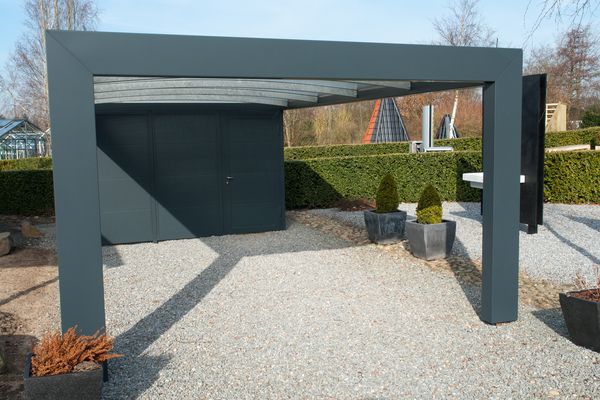
Carports are a great way to add value to your home. According to an American housing survey by the United States Census Bureau, 80% of owned houses in the U.S. have either a carport or a garage.
These structures are also extremely affordable, and come in various sizes. They can be constructed as part of your home or stand independently. Today, they have become a popular choice for folks who want to protect their vehicles without having to install a garage.
Keep reading to learn more about carports, what sets them apart from standard garage, how they work, and the benefits they provide. We’ll also look at unconventional methods of construction, including how to build a shipping container carport.
What Is a Carport?
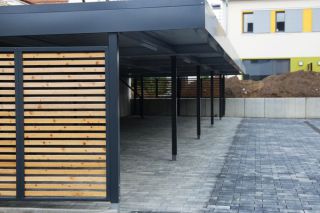
Carports usually are wood, steel, or aluminum structures that safeguard your vehicle from snow, hailstorm, rain, or other challenging weather conditions. They also shield your cars from bird droppings and dry leaves.
Many roof kits come with wind and snow load ratings. These features either contain two walls or are open from all sides. You can also attach a carport to a brick-and-mortar wall on your property.
If you are a gardening enthusiast, you can integrate the carport with your garden and have creepers go up the structure to make it even more beautiful. You can even use carports as a front porch, storage space, or a shaded playspace for the kids.
While carports are fairly common, they are still often confused with garages. The best way to distinguish the two structures revolves around their association with the home.
When standing independently, garages can be secured, and used as temporary living or storage space.
Difference Between a Carport and a Garage
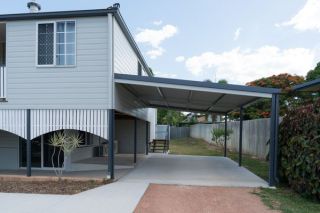
Check out the chart below for more comparisons between a carport and a garage:
| Feature | Carport | Garage |
|---|---|---|
| The appearance of the property | Carports are detached from the house with at least one side open. They are either wood or metal structures over which you can put a fabric, metal, or plastic sheet roof. | Garages are either attached to the main house or standalone structures. They have four walls and the main entry (manual or automatic) that opens into the driveway. |
| Storage | Carports are open structures without a locking system, meaning you should only store non-expensive items underneath to protect them from the weather. | Garages have a locking system which makes it easy to put expensive tools or machines inside. |
| Time to build | Installing a simple carport is a fast and easy process which can be completed within a few hours. You may need a professional service for more complex structures that go over concrete slabs. | Garages are brick-and-mortar structures with doors, windows, storage racks, and interior finishes. This can take a few days or even weeks to complete the structure. |
| Cost | A 20 x 20-foot permanent carport with a concrete slab underneath may cost $7,200. | The cost of a garage is typically calculated by foot. A basic structure with additional lighting, storage, floor, and finishing may cost upwards of $33,000 or more. |
| Permits and regulations | Local municipalities do not categorize carports as storage or living space. Therefore, there are very few regulations (if any). Usually, there is no restriction on the materials and sizes. | Since people use garages as living or storage space, they need to comply with all the necessary building codes such as fire-rated walls. |
| Security | Carports are used primarily to keep the car safe from hot sun, hail, rain, and snow. They do not have a door or locks which can protect any expensive items. You can install a security camera for additional safety concerns. | Garages have four walls, a roof, and a lockable door for complete protection. |
Alternatively, you could make use of shipping containers for shipping container garages.
Types of Carports
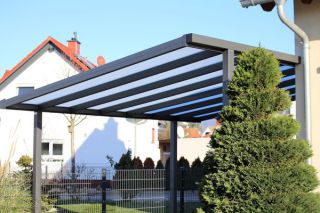
Based on Materials Used:
- Metal Carports: Most modern carports are made of metals like steel and aluminum. These structures are lightweight, sturdy, and have a long life. Be sure to check the gauge number of the metal sheet. The higher the gauge, the higher the quality. Typically, metal carports come in the following varieties:
- Steel Carports - Steel carports have a galvanized (often corrugated) steel sheet with additional rust protection paint to shield from rain and moisture. They have a life of 20-years or more with adequate maintenance.
- Alumawood® Carports - Alumawood is a specialized material that looks like wood but is made from aluminum. It allows builders to achieve a distinct aesthetic while maintaining the kind of sturdiness that metal provides. These structures also come in a range of colors. Unfortunately, they don't typically last as long as steel carports.
- Aluminum Carports - Just as the name suggests, this carport maintains an aluminum structure that you can custom design with the paint of your choice.
- Timber Carports: Timber or wooden carport designs are aesthetically pleasing. You can also use them as pergolas for outside seating space. Wood also needs regular maintenance to avoid decay.
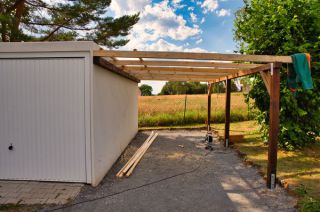
Based on Functionality:
- Portable Carports: Portable options are ideal for when you don’t need to protect your car all year round. Made of stainless steel, these carports are easy to assemble and disassemble. You can use portable carports interchangeably in residential or commercial buildings.
- Permanent Carports: These are permanent structures that do not have the flexibility to move. They may be metal or wood and often have extended aesthetics or customizations according to the homeowner's taste. Permanent carports are ideal for permanent residents who need to protect the vehicles from the weather year round.
- Specialty Carports: These carports are custom-sized, stylish, and designed to suit your specific needs. In most cases, people use them for parking boats, campers, semi-trucks, and more.
Based on Design:
- Gable Roof Carports: This design has a tapered roof with corners bent downwards. It works well in areas with high rainfall where the water can slide off without any manual effort. Taper roofs also blend in with the original structure, providing a more uniform aesthetic.
- Flat Roof Carports: This design has a flat roof and is suitable for areas with moderate rainfall. This structure is best for catching dry leaves and bird droppings. It’s also one of the most affordable available.
- Flemish Gable Carports: This is an extension of the traditional gable roof carport. It is also called the Dutch-style carport, with a sloping pediment construction. This design gives a modern look to the house and can double as an extra entertainment area for parties.
- Attached Carports: You can attach these structures to your home with a roof extension. They can also act as a pathway from the house to a detached shed or a garage.
How Can Shipping Container Roofs Help Build a Metal Carport?
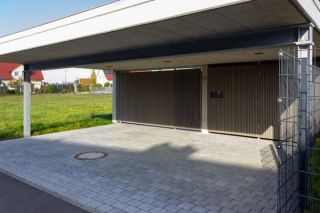
Additional benefits include:
- Easy and quick installation
- The scalable length by adding more roofs or containers
- Easy to disassemble and transport
- The roof can attach securely to a container
- Attach shipping container carport kit with other shelters for any specific requirements
What Are Container Cover Roofs Used For?

You can use container sheet roofs to cover the space between two shipping containers in industrial, commercial, or construction areas for a more functional site. You can use this space to store heavy equipment, cover machinery, or create workshops.
Real-Life Example of a Shipping Container Carports
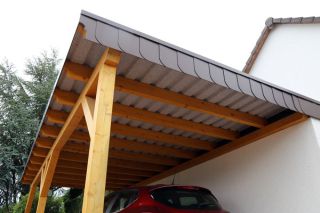
Shipping container carport designs are sturdy and can even withstand storms better than other lightweight designs. Learn how one Texas family used a carport to keep their vehicles safe along with food for their pets. Below, you’ll find their notes on how long the project took, the costs involved, and the equipment needed.
Container Purchase:
- Before you purchase, inspect the container for any damage, cracks, or nasty residues.
- Look into your area to find a shipping container yard. The advantage is that you will save on transportation costs.
- Choose a size appropriate for your space and requirements.
Site Preparation:
Level the ground and place the container on concrete blocks.
Building the Carport:
- Ensure there is enough room to open the doors of the container.
- Use self-tapping screws to get the carport up without any welding.
- Build a concrete ramp with crushed asphalt to drive the vehicles up to the carport.
- Add security cameras and electricity wires for lights.
Essential Things to Consider While Building Carports with Shipping Containers
The following points will help you organize your upcoming carport project before beginning construction.
Container Cover Roof Costs
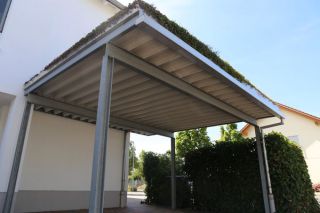
Container-based roofs and carports are cheaper than most other options. Prefabricated containers and corrugated steel sheets also ensure strength and longevity.
Depending on its condition, a 20-foot used container may cost between $2,350 and $7,900. New containers will be more expensive than single-trip or used ones.
You should also factor in the installation cost per square foot.
How to Position the Roof
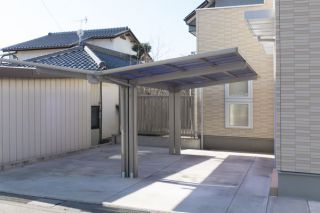
You can attach a roof to the inside (inside mounts) or outside (outside mount) edges of two containers. The roof can be either flat or curved.
A roof on the inside edges uses less metal and is cheaper, but it exposes the container's roof to harsher conditions.
The roof attached to the outside edges uses more metal and is expensive, but it protects the containers and provides extra storage space underneath.
Ideal Container Size for a Carport
The smallest size we recommend is 20-feet, though you can also invest in a larger 40-foot container for additional space. The example above allows for two carports on either side of a container, which saves you money in the long run.
Installing Container Roofs
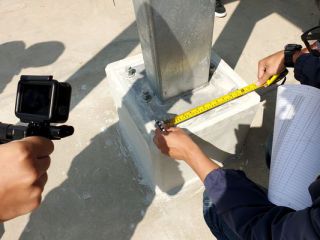
Due to their modular nature, containers and roofs are easy to install. It is easy to cut and fasten using bolts.
Foundation and Leveling for a Container Carport
Prepare the site by removing any debris, rocks, trees, plants, or roots so that the area is flat. You need a sturdy base to keep the container on. You can further level the site by tamping gravel on the ground or using either a concrete slab or concrete blocks.
Shipping Container Carports Vs. Traditional Carports
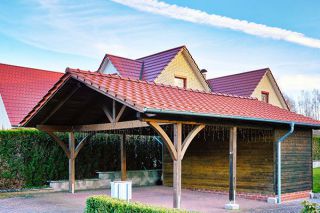
A shipping container carport kit has numerous advantages over traditional carports:
- Corrugated stainless steel has a long service life and can withstand any climate.
- Containers are modular. It is easy to attach more containers to make larger carports.
- Re-use existing containers rather than buying new material. This makes your structure environment-friendly and sustainable.
- Design and paint the walls of the container in any way you want for great aesthetics.
- You can't use traditional carports for storage. But a shipping container carport gives you a secure lockable space to store expensive machines or tools.
Conclusion
Shipping container carports offer many advantages over traditional carports or garages. They are inexpensive, easy to construct, and even easier to modify. Along with the three-side open area, you get the four walls of the container, which you can repurpose.
They are also sturdy and weather-proof, making them an excellent option for all types of climates. If you are looking for an affordable, durable, and customizable carport, then a shipping container carport is the right choice for you.
Mobile Modular Portable Solutions offers high-quality new and used shipping containers for sale and rent. Call us today at 866-535-5549 or request a quote to learn more about our industry-specific container solutions.
Frequently Asked Questions
Can You Use a Shipping Container as a Garage?
Because of their durability, speed of construction, flexibility, and cost, shipping containers make for great garages. Shipping container garages also possess a robust steel structure and locking options, keeping your car safe and protected.
Is a Shipping Container Carport Cheaper Than a Shed?
Yes, a used 20-foot shipping container will cost you between $2,350 and $7,900, depending on its condition. On the other hand, a wooden shed may be listed at $4,300 and increase in price as you add more features.
Related Blogs

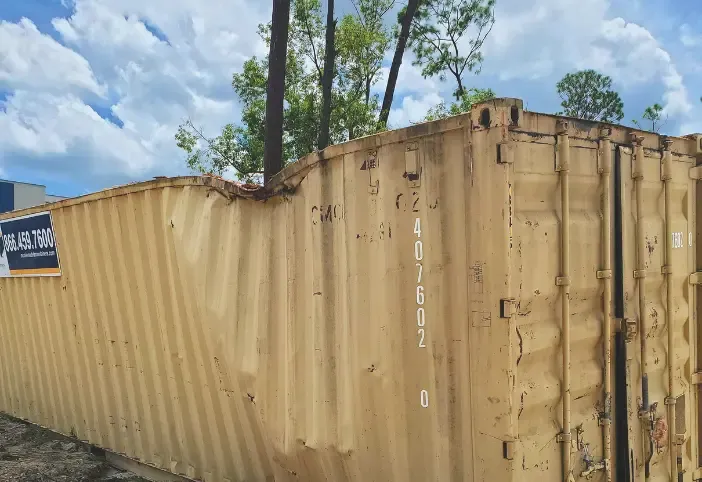
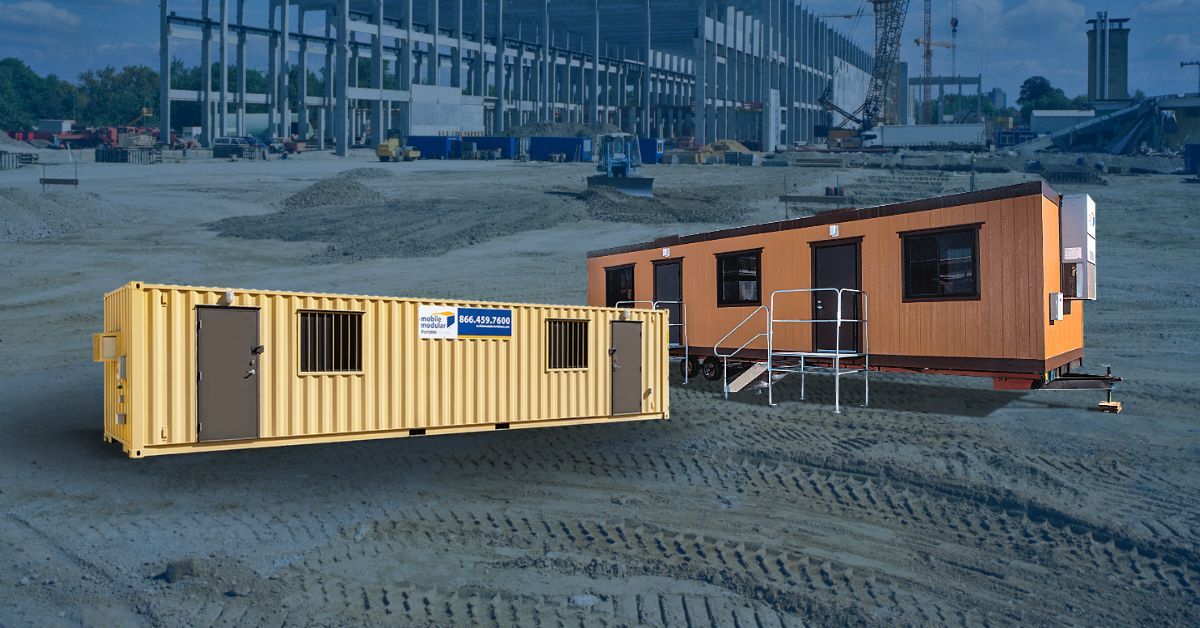
Subscribe to Our Blog
Enter your email address to subscribe to the blog and receive the notification of new posts by email.
Thank You for Subscribing to Our Blog!
Stay tuned for upcoming emails with valuable content that we hope will enhance your experience with our brand.
Both Pardot and mg360 form submissions failed.
